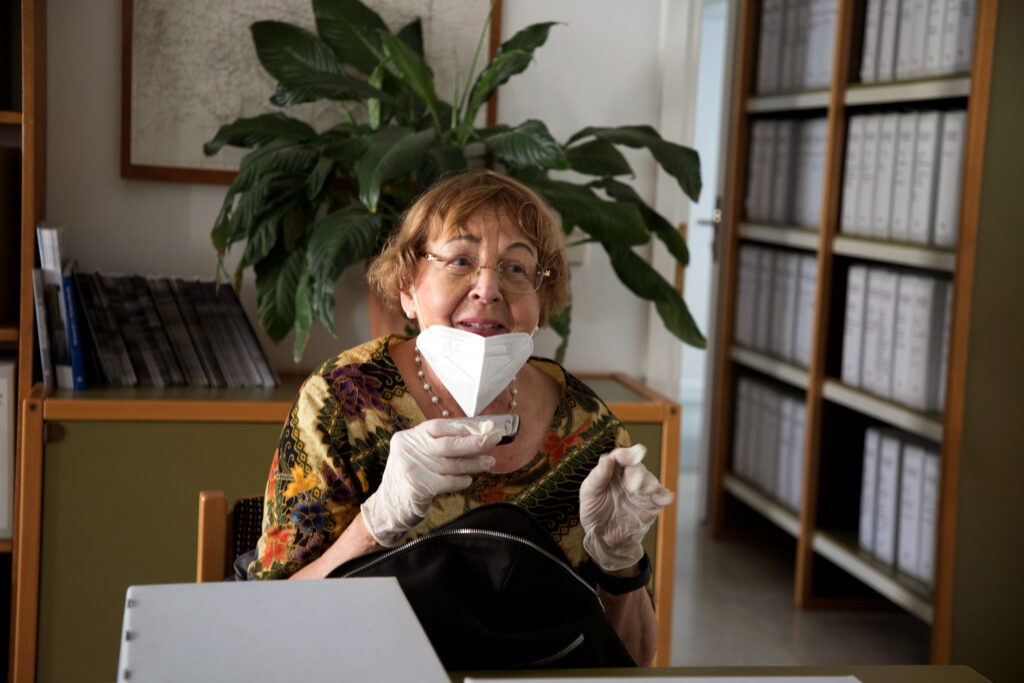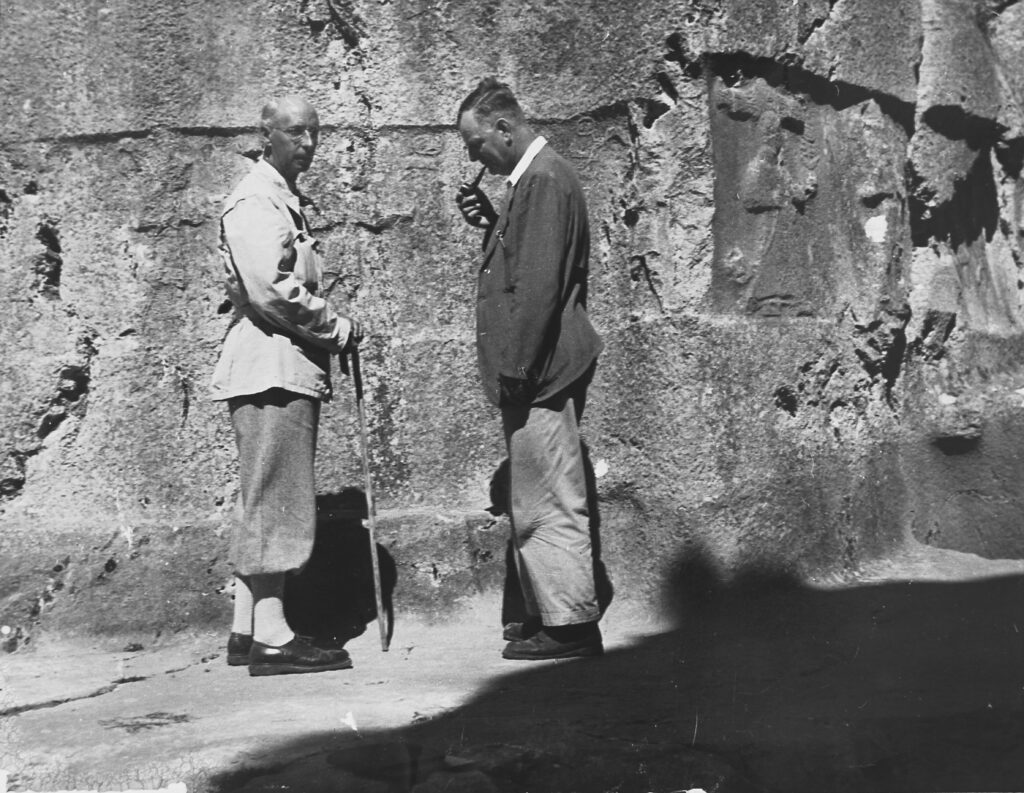Archives are primarily places where important documents are held, but they are also spaces where archivists and researchers can exchange information. With digitalization and this ongoing process, the relationship between archivists and researchers is now continuing in a more limited area. There is almost no need for face-to-face meetings. However, archivists and researchers can still cross paths thanks to archival material that cannot be found on digital platforms. From the encountering of these two, it is usually possible to emerge a well-intentioned relationship focused on solidarity. While this relationship continues both sides don’t know which archival material will evoke what kind of story. Besides, this relationship does not only work in favor of the researcher. For instance, the questions and stories of a curious and wise visitor allow us to get to know the archive more closely. Hannelore Brucker, who came from the US and visited us towards the end of the pandemic period, just when we were longing for visitors, was one such visitor. She came to Istanbul for a medical congress; her interest in archeology had dragged her to our institute. Her love for archeology was based on one of the important figures of her childhood. Kurt Bittel, one of the former directors of the institute, was one of her childhood heroes! We asked Hannelore to write down the stories she told while looking at photographs of Hattusa. And here is the result!
© DAI-IST | D-DAI-IST-2022-00010, Berna Güler
My visit to the German Archaeological Institute in Istanbul
In October 2022 I attended the World Allergy Congress in Istanbul. One of the organizers, Yusuf Irmak, was kind enough to schedule a visit for me at the German Archaeological Institute. I was received with open arms by the archivist and the librarian. They were excited that I grew up in Heidenheim, Germany, the birthplace of known archaeologist Prof.Dr. Kurt Bittel. He was inspiring our whole town with an interest in archaeology. In my youth his friend and hobby archaeologist, Dr. Walz, a companion on several of his archaeological visits, organized trips for physician families to local archaeological sites. Our city of Heidenheim is built above the Roman castel Aquilea and connected to the limes, a Roman frontier fortification. We are surrounded by Celtic and Aleman sites, tribes that were in the area before the Roman time.
I was thrilled to see the place where Dr. Bittel once worked. He is the generation of my father, who was just five years younger. These young students attended the Hellenstein Gymnasium, preparing them for university studies. They learned Latin for nine years and Greek for seven years and could read the historical literature in the original text. Even when I grew up, the editor of the Stuttgart Newspaper would publish a whole issue every three months in Latin. So, Dr. Bittel had excellent teachers, even some who were interested in archaeology.
© DAI-IST | D-DAI-IST-R32768, Author: U. Moortgat-Correns
I was so proud to see the bust of Dr. Bittel in the Archaeological Institute, where he became a director in 1953. His time in Turkey goes back to 1931 for different projects. In 1944 he had to leave Turkey during WW II. He told friends the story of his return as an ordinary professor at the University of Istanbul. The custodian, after six years of absence, greeted him with the following words: “Professor, here is your coat, and here is your desk”. He had guarded the place for him. Dr. Bittel was liked in Turkey and had many friends. One of his life-long friends was Professor Arif Müfid Mansel (s. picture from 1962, Yazılıkaya/ Boğazkale).
I was so glad to be led to the archives, where the archivist showed me pictures from Dr. Bittel’s excavation of Hattusa (Boğazköy). I was excited to be allowed to see his beautiful photographs of the historic finds from this ancient empire of the Hittites.
A great thank to all the institute!
Hannelore Brucker
Introduction: Berna Güler, DAI Photo Archive


